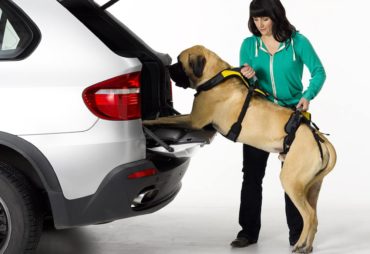 As your dog ages, your care must evolve to meet your furry friend’s changing needs, particularly when it comes to mobility, injury-prevention and recovery.
As your dog ages, your care must evolve to meet your furry friend’s changing needs, particularly when it comes to mobility, injury-prevention and recovery.
The following tips can help keep your aging dog mobile, healthy and happy.
Fish oil: Originally recommended for treating canine allergies, fish oil is now used to treat numerous conditions, including arthritis and high cholesterol. Consult your veterinarian about the proper dose for your pup.
Paw or toe grips: As your aging dog’s hips get weaker, the risk of knee, hip or spinal injury increases. Hip dysplasia is particularly common among larger dogs. Using paw or toe grips, such as Dr. Buzby’s ToeGrips, can provide dogs with greater traction, helping them get up off the ground and to slide less on wood floors. You may also want to try placing down rugs or yoga mats where your dog tends to spend time, to reduce the chance of sliding and injury.
Pain management: Nonsteroidal anti-inflammatory drugs (NSAIDs) are the most prescribed medications for treating conditions such as arthritis in dogs. Don’t attempt to treat your dog with your own over-the-counter pain medications. Get dog-specific medications, such as Dazequin Advance.
Lifting assistance: Aging and injured dogs can have trouble lifting themselves off the floor, up the stairs and into cars, and you may not always be able to safely assist them yourself. For some help, use a special harness, such as the Help ‘Em Up Harness. A nine-point chest and hip harness made of comfortable waterproof material, it can help aging pets or pets recovering from surgery stay active, gain confidence in their mobility, reduce the risk of re-injury and have a better quality of life.
Rehab: Just as you would follow a course of rehabilitation exercises and physical therapy after a hip or knee surgery or injury, so should your dog. Seek out a Certified Canine Rehabilitation Therapist to help improve the function and mobility of your dog’s muscles and joints. Muscle strengthening can help your dog stay injury free, as well as manage pain.
Providing dogs with a great quality of life involves new considerations as they age. Be sure to take special precautions with dogs facing mobility issues and pain, as well as preventive steps to reduce the risk of injury.









